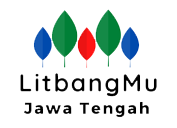MENGATASI PERMASALAHAN SISWA DALAM PEMBELAJARAN: EKSPLORASI PENERAPAN MODEL PROBLEM BASED LEARNING (PBL)
DOI:
https://doi.org/10.51402/jlste.v3i1.132Keywords:
Lesson Study, Problem Based Learning, Critical ThinkingAbstract
The era of globalization confronts the world of education with quite complex problems. This encourages the initiation of problem-based learning methods/models. Social interaction in the form of collaboration is one strategy that makes it easier to solve problems. Various learning strategies are chosen, with the hope that students can improve the quality of their knowledge and skills. This research aims to find best learning practices that can provide added value for anyone who reads it. This research is a qualitative descriptive study using the STAR method (Situation, Challenges, Action, Reflection on Results and Impact) to describe the implementation of lesson study. The results of this research show that the use of the problem based learning model makes students trained in their critical thinking skills. Students are more critical because they are trained to formulate their own problems. This is shown by the increase in student learning outcomes as evidenced by the results of formative tests carried out during learning with the highest score being 100 and the lowest score being 60. This learning success factor is largely determined by the teacher's competence in managing learning, especially in terms of selecting innovative learning models and media that are developed. in teaching modules so that students' critical thinking abilities can increase.






 Pendidikan Profesi Guru (PPG) UNIMUS
Pendidikan Profesi Guru (PPG) UNIMUS
